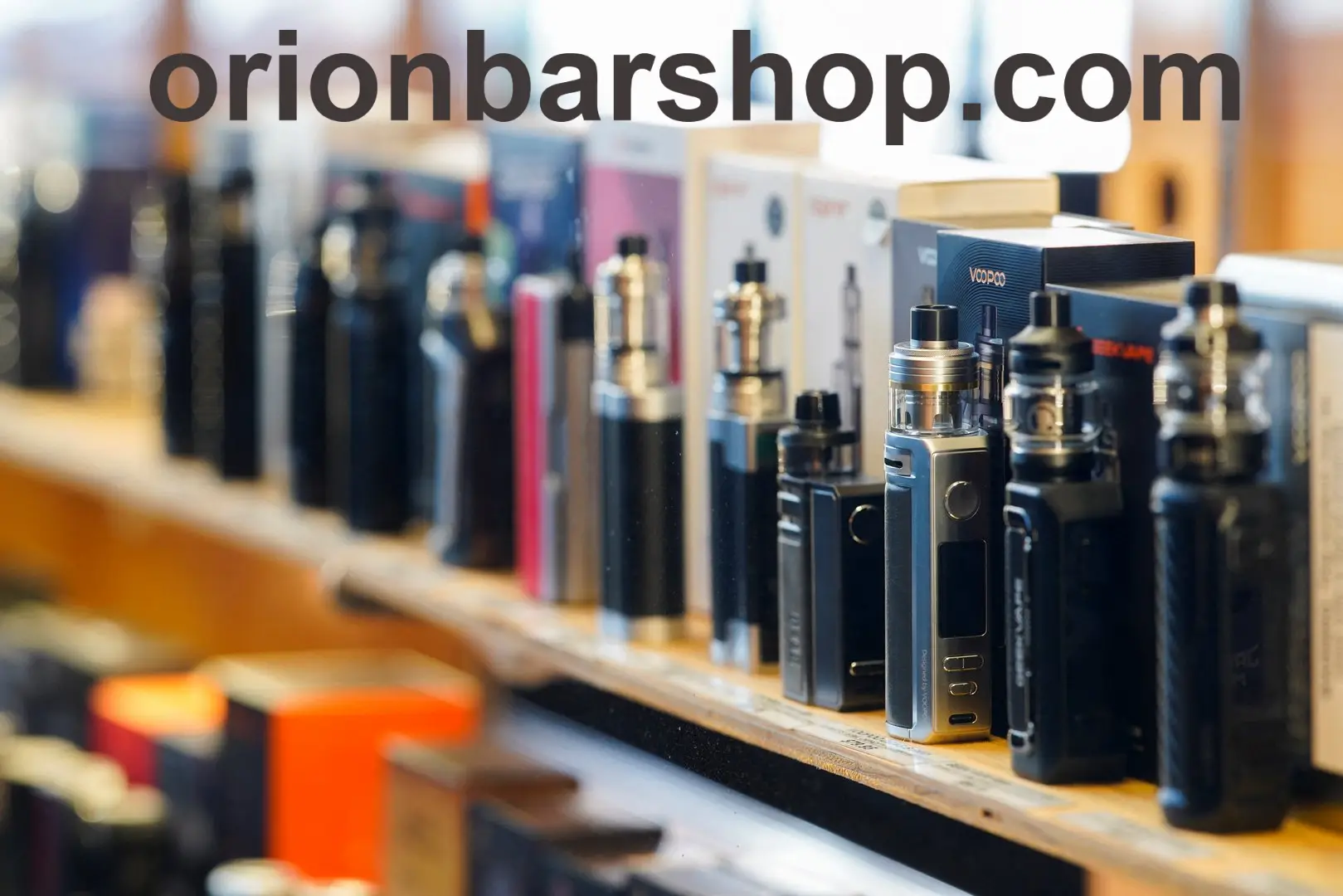Why Are Countries Tightening Vaping Regulations in 2024 and Beyond?
As we move into 2025, countries across the globe are intensifying their approach to vaping regulations. But why are governments cracking down on vapes while keeping traditional cigarettes under a relatively relaxed regulatory framework? DeepSeek provides some insight into this trend, and the reasons are much more complex than you might think. The tightening of vaping policies reflects various factors, including public health policy history, scientific uncertainty, social and economic interests, and different regulatory priorities. 
1. Historical Path Dependency: Traditional Cigarettes as the “Status Quo”
Longstanding Social Integration: Traditional cigarettes have been around for centuries, creating massive industries, tax systems, and consumer bases. Despite the well-established health risks, an outright ban would create huge economic and social disruptions. Therefore, policies around cigarettes focus more on “gradual harm reduction”—think higher taxes, advertising restrictions, and promoting smoking cessation programs.
Gradual Progress in Tobacco Control: Over the past few decades, global efforts through frameworks like the Framework Convention on Tobacco Control (FCTC) have successfully reduced smoking rates. Traditional cigarette regulation is more developed (with things like warning labels and smoking bans), while vaping, being a relatively new phenomenon, doesn’t have that mature regulatory structure in place, and governments are rushing to fill this gap.
2. Scientific Knowledge Gap: The "Unknown Risks" of Vaping
Clear Health Hazards of Cigarettes: The dangers of traditional cigarettes are well-documented. Burning tobacco releases tar, carbon monoxide, and over 7,000 chemicals, many of which are carcinogenic. The health consequences, like lung cancer and heart disease, are firmly backed by scientific consensus.
Uncertainty Around Vaping’s Risks: While vapes don’t contain the tar that’s present in traditional cigarettes, the long-term effects of vaping are still a gray area. Questions about the risks of nicotine addiction, the safety of vaporized chemicals (like propylene glycol and glycerin), and the potential dangers of flavoring agents (some of which have been linked to lung disease) are still up in the air. This scientific uncertainty makes governments more cautious in their approach to regulation.
3. Market Maturity and Target Audience Differences
Cigarette “Stockpile Management”: Smokers are mostly from the older demographic, and policies around cigarettes primarily focus on “reducing new users and encouraging smoking cessation.” Meanwhile, vaping is marketed as a “healthier alternative” and comes with flashy designs, diverse flavors, and the promise of reduced harm, which has attracted a much younger crowd—teenagers and non-smokers alike. This surge in new users, especially among young people (with the U.S. seeing a huge spike in teen vaping during the 2010s), has triggered public health alarms.
Dual Use Issue: Many people who vape don’t fully quit smoking traditional cigarettes, leading to “dual use” (vaping and smoking at the same time). This undermines the effectiveness of smoking cessation efforts and has led governments to limit the promotion of vapes.
4. Regulatory Logic: Preventing Spread vs. Reducing Harm
Cigarettes: The regulatory goal is to gradually reduce harm by increasing taxes, restricting advertising, and promoting alternatives like nicotine patches. The idea is to slowly phase out smoking without causing massive societal disruptions.
Vaping: Vaping poses a unique challenge because of its potential to create a new generation of nicotine addicts. Regulators are more focused on preventing the spread of this new addiction, fearing that vaping could undo decades of tobacco control efforts. This is why policies are more inclined to “strict entry controls”, such as banning flavored vapes and restricting online sales.
5. Economic and Social Forces: Industry Lobbying and Interests
Tobacco’s Strong Lobby: The traditional tobacco industry has long had deep ties to government policy through lobbying and tax contributions. Many countries rely on tobacco taxes, which makes any policy reform in this area a tough battle.
The Rise of Vaping: Vape companies like Juul have rapidly expanded their market share, often using heavy capital investment and marketing strategies to promote their products. However, unlike the established tobacco industry, vaping companies lack a robust political foundation, making them more susceptible to regulatory pushback. Additionally, the “harm reduction” messaging around vaping has raised alarms in the public health sector, concerned that it could undermine the efforts to curb smoking rates.
6. Social Perception Differences
The Stigmatization of Smoking: After decades of anti-smoking campaigns, smoking is widely considered a “bad habit” in many societies. As a result, public acceptance of smoking restrictions (like smoking bans in public places) is relatively high.
Contradictory Image of Vaping: Vaping is often marketed as a “cool tech product” or “part of a trendy lifestyle”, and many young people see it as a safer alternative to smoking. However, public understanding of the dangers of vaping is still murky, especially among teens. Governments are now looking to “reframe” vaping’s image through stricter policies such as advertising bans and tighter packaging regulations.
Conclusion: The Core Differences in Policy Goals
Cigarettes: Cigarettes have moved into a phase of “stockpile management”, where the focus is on gradually reducing harm and accepting that smoking will phase out over time. This is a long-term process, and society has already adapted to the reality of tobacco use being part of history.
Vaping: Vaping, on the other hand, is in an “explosive growth phase”, with policies aimed at preventing a new public health crisis and the creation of a new generation of nicotine addicts. Governments are opting for stricter controls in the early stages to avoid repeating the mistakes made with traditional tobacco products.
This isn’t a case of “double standards”, but rather a strategy based on different stages of development, scientific evidence, and social risks. As research on vaping continues to evolve, regulatory policies may shift, but the core logic will remain focused on “preventing unknown risks” and “protecting youth”. Vaping advocates need to pay attention to shaping a positive public image for the industry to ensure long-term viability.
A New Era of Vaping Regulation: Understanding the Global Trend
As we step into 2025, governments around the world are tightening their grip on vaping regulations. This isn’t just a coincidence; it’s a global movement backed by a variety of social, economic, and health-related factors. If you're wondering why countries seem to treat traditional cigarettes with a “passive” approach while aggressively cracking down on vapes, it all comes down to a combination of history, science, and politics.
The Legacy of Tobacco
Traditional cigarettes have been a part of society for centuries, creating powerful industries and generating huge tax revenues. Because of this deep-rooted history, governments have long taken a more gradual approach to controlling tobacco. Policies focus on “reducing harm” through measures like higher taxes and public smoking bans. Meanwhile, the growing wave of vaping has thrown a wrench into this long-standing system. Vaping is a newer phenomenon, so governments are scrambling to establish regulations that can keep up with the rapid rise in popularity.
The Science Behind the Concern
While smoking has been thoroughly studied, vaping is still under intense scrutiny. Traditional cigarettes release a cocktail of harmful chemicals, including tar and carbon monoxide, that have been proven to cause cancer and heart disease. Vapes, however, don’t have these same chemical profiles, but there’s still a lot we don’t know about the long-term effects. This uncertainty is fueling caution. Questions about the safety of e-liquid ingredients and the potential for addiction are causing governments to err on the side of caution.
Vaping's Appeal to Youth
One of the major factors behind stricter vaping policies is its appeal to younger generations. The flashy designs, wide variety of flavors, and promises of reduced harm have made vaping especially popular among teens. In the U.S., this trend has been particularly concerning, with high rates of adolescent vaping. The issue? Many young people end up becoming addicted to nicotine—something policymakers want to avoid at all costs.
Why Stricter Regulation?
The goal of vaping regulation is to prevent a new generation of nicotine addicts and keep public health from backsliding. While traditional cigarette policies aim to reduce the impact of an already existing market, vaping regulations are proactive, aiming to “prevent harm before it begins.” Governments are banning flavored vapes, restricting sales, and putting other controls in place to limit the appeal of vaping to younger users.
The Economic Landscape
Tobacco companies have spent years lobbying governments and contributing to tax revenues, which has made policy reform a tough battle. On the flip side, the vaping industry is still relatively new, with much less political clout. But even so, vape companies are facing increasing scrutiny from health organizations concerned about their impact on public health.
The Bottom Line
While it may seem like there’s a double standard between how governments regulate smoking and vaping, the truth is that these policies are shaped by different concerns. Smoking is a long-standing issue with decades of established regulation, whereas vaping is still an emerging market, and governments are moving quickly to ensure it doesn’t create a new health crisis. As research on vaping continues to unfold, policies will likely evolve, but one thing is clear: the focus is on “protecting youth” and “preventing unknown risks.”

